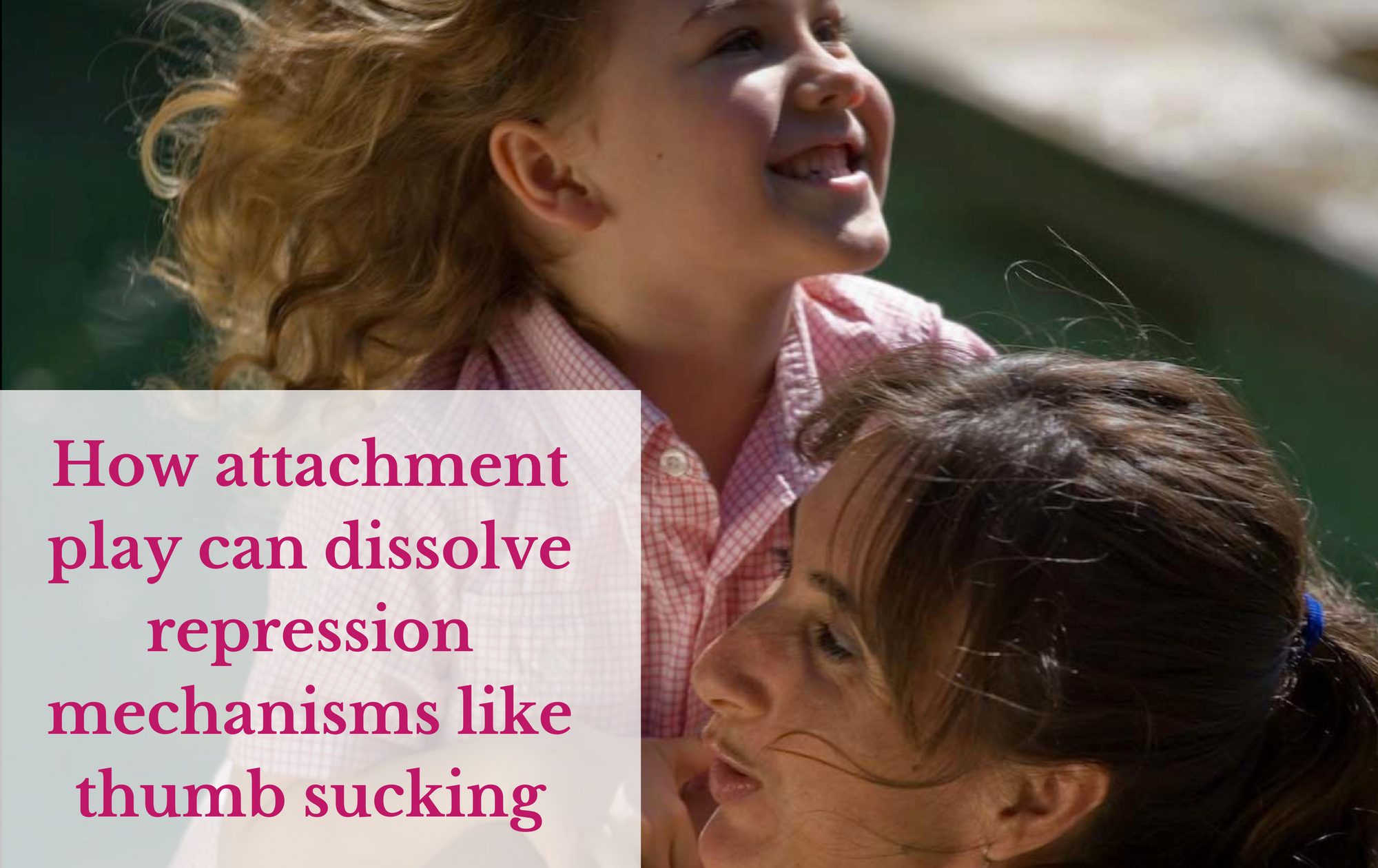Hello!
I did a FB live on this today. You can watch it HERE.
So, repression mechanisms!
Pretty much anything can become a repression mechanism, but common ones in children are things like:
thumb sucking
eating when upset
hair twirling
nose picking
sucking on something
clutching a toy or blanket
moving around
talking
screens
milk
sweet things
moving from one thing to the next in quick succession.
How can you tell if something is a repression mechanism?
Well, if your child often does it when they are clearly upset (eg. they’ve fallen over), or when they’re tired (which is when upset feelings bubble to the surface to be expressed), and if they tend to look a bit glazed in their eyes, then it tells us that it may be a repression mechanism.
Before we go any further, I’d like to remind you that we’re going to be able to respond most helpfully if we’re not judging repression mechanisms, or ourselves or our children for them having them.
I like to see repression mechanisms as flags – simply indications that uncomfortable feelings are bubbling up to the surface but aren’t being expressed.
What I find most helpful to remember is that the antidote to repression is connection.
When we’re not judging a repression mechanism, or ourselves or our children for them having them, we’re going to be way more likely to offer that connection that is the antidote.
The wonderful thing about attachment play is that it offers a special kind of warm connection, often added to by a dose of laughter.
Basically, a repression mechanism means that a child is disconnecting from her body and her feelings. She’s doing that either through distraction or dissociation.
In other words, she’s distracting herself away from the discomfort by creating another sensation to focus on.
Or she’s dissociating from feeling her body so as to not feel the uncomfortable feelings.
When we find these particular ways of inviting connection with her, she will feel connected with us, and being connected with us also means being connected with herself, and her body, and her feelings.
That’s how attachment play works.
There’s connection.
And in most of the 9 forms, there’s also laughter.
Laughter helps create a special kind of warm connection.
Laughter also releases feelings of things like light fears, powerlessness, frustration, feeling unsure, and so on.
So, when we get in and do attachment play with whatever our child is presenting as a repression mechanism, we’re helping her connect with herself and her body; connect with us (which she needs to be able to let out the feelings); and we’re helping her release lighter feelings that are sitting on the surface.
And sometimes, repeated attachment play might in itself be enough to dissolve a repression mechanism.
But sometimes, that repression mechanism might be holding a whole lot more and bigger feelings at bay.
In which case, the attachment play often opens the doors for those bigger feelings to emerge.
Like a pressure cooker, letting off steam of the lighter feelings with laughter, and giving the warm loving connection of the play, lead to bigger feelings coming out in tears and tantrums.
In the FB live I talk in more detail about some of the games you can play with things like thumb sucking and dummies/pacifiers.
If you want to help your child release a repression mechanism, you might like to watch it!
I also really recommend Aletha Solter’s book Attachment Play.
And as I’ve been talking about this week, my 4 week Attachment Play Course live round starts on TUESDAY.
It’s an opportunity to DEEPLY understand attachment play;
to know which type of play to use in which scenario;
to help yourself feel freer to play;
and to get personalised support in using attachment play in your unique family situation.
I love this testimonial below, from Georgina, to explain how doing the course helped her respond differently to her son’s thumb-sucking.
I am so grateful that I have completed Marion’s Attachment Play course, it has changed my life.
Before I was struggling to find ways to help my son release his difficult feelings and often felt like i was in conflict with him.
Now we are playing and smiling and finding easy connection.
Before, he would suck his thumb with a blank stare and not make eye contact. I would feel lost and often exasperated.
Now when he sucks his thumb, it is an invitation to play, and his smile and laughter make both of our eyes shine.
Marion’s Attachment Play course has helped me be the mum I wanted to be and given me insight and tools for the potential challenges ahead.
If you want to hear your child laughing, smiling and shining with joy, if you want to move beyond punishment and rewards in your parenting, I highly recommend Marion’s Attachment Play Course.
Georgina
You can find out more about the course HERE.
Much love,
Marion xoxox
